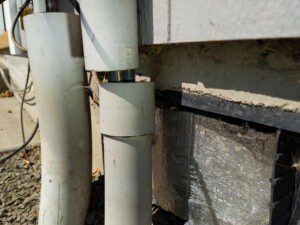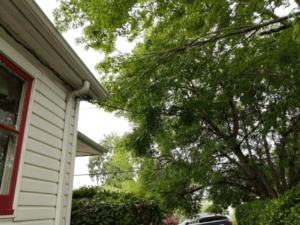A service-entrance conductor is a wire that comes into the service. It connects the utility power to the meter and main disconnects at the service. Understanding where the service begins and where it ends is critical in the proper application of many code rules.
The service point is the point of connection between the facilities of the utility and the premises wiring. The entrance conductors are from the service point to the service disconnecting means (service equipment, not meter), thus the meter is also included in the service entrance conductors.
Service entrance cables, unlike entrance conductors, are usually of two types: SER or SEU. SER is reinforced while SEU is unarmored. These wires are typically used as a panel feeder in multi-unit residential settings, or when the main disconnect is located at the electrical meter and should not be confused with service entrance conductors.
Local codes, design features or geographical conditions may determine the installation method of service entrance conductors. In older neighborhoods, rural settings or where obstructions could limit underground installations, it is typical to see overhead electrical conductors. Newer neighborhoods and downtown areas have long since been installing their utilities underground. Underground utilities are more dependable, safer and you can’t see them. However, installation costs are considerably higher.

Although there are several exceptions concerning clearance requirements around roofs, the primary exception allows overhead conductor clearances be reduced from 8 ft to 3 ft, if the slope of the roof exceeds a 4/12 pitch. Another consideration to pay attention to is the attachment point. If using the mast, the service mast must have adequate mechanical strength, braces or guy wires added to withstand the strain caused by the service-drop conductors. Bent or leaning masts would be a defective condition.
When installing service entrance conductors underground, there are several considerations concerning the depth requirements. Typically a trench is dug 24 inches below grade and is a minimum 12 inches wide. Properly rated 2 in PVC conduit is laid in the trench, where no more than three, 90 degree bends (270 degrees) and no individual bend has less than a 24-inch radius. The conduit must be covered with a minimum of 18 inches of clean fill to avoid damage to the conduit, then the rest of the trench backfilled. Some utilities may require different specifications.

